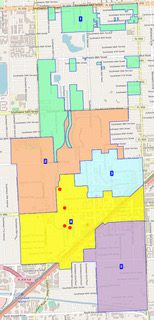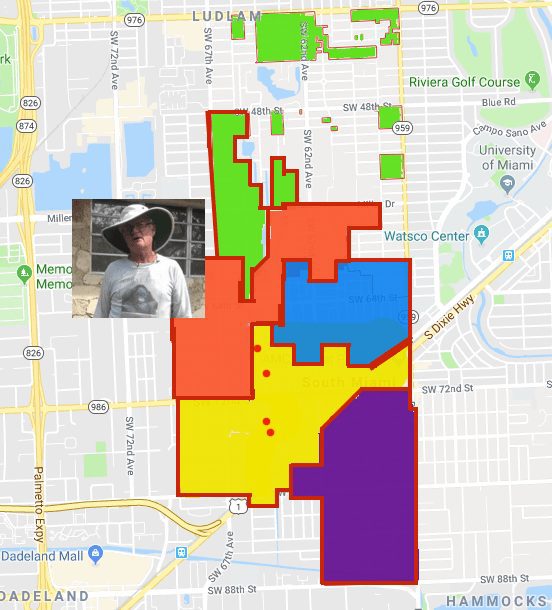
During a recent South Miami City Commission meeting, which was seen by many as a first blow to undo the 99-year lease that the Girl Scouts have on the Little House, Commissioner Bob Welsh said that they were too white.
His slur about the Girl Scouts was unfounded. The problem was that Bob focused his gaze on the Girl Scouts and not upon the commission he sits on. It is too white, and it needs to change before change is forced upon it by a federal court.
To figure out what is wrong with the South Miami Commission will require doing a little math. This won’t hurt, I promise, so stick with me.
During the last census, South Miami had a population of 11,657. Surprisingly, non-Hispanic whites only make up 29.2 percent of the city, while Hispanics are now a majority with 51.2 percent. The black population of the city is 15.4 percent and Asians and others make up the rest. South Miami is a diverse community, but you wouldn’t know it by looking at the mostly pale, wan faces of the four sitting commissioners and our mayor.

If we were to create five single-member districts, the ideal population of each district would be about 2,331. Curious as to what a single-member district plan for the City of South Miami might look like, we called in Stephen Cody, a man who not only drew the districts for the City of Miami after the 2000 and 2010 censuses, the Palm Beach County Commission and School Board, but numerous jurisdictions throughout the South. Cody also helped draw and defended the State of Florida’s plans for the Congress and the two houses of the Legislature in 2002. He’s best known for taking Miami-Dade County and the school board into federal court under the Voting Rights Act and forcing them both to adopt single member districts. Cody used the same census data and same software the State of Florida used when it drew the Congressional, State House, and State Senate plans in 2012.
Cody divided the city into five single-member districts. Why include the mayor’s office? It’s because when a city mayor has no executive powers and only bangs the gavel his office is not considered unique enough to exclude from the districting process. That’s the reason we didn’t have a county mayor for a time. The federal judge swept the office away.
The map Cody came up with is shown with this editorial. He found it was possible to create a district plan that had a district that was majority African-American and one that was majority Hispanic. The remaining three districts will be competitive. You can see the details in the table below.

Going to single member districts would certainly shake up the local political landscape. The South Miami City Commission would look less like Boy’s Night at a local Moose Lodge and would be more reflective of South Miami’s diverse population.

Going to single-member districts would also have the effect of getting candidates to run from all neighborhoods in South Miami. Right now, three commissioners, Luis Gil, Walter Harris, and Bob Welsh, together with Mayor Phil Stoddard, all live on the same street, Southwest 64th Court. Gil and Welsh live directly across the street from one another and Stoddard and Harris are so close that a pop fly hit in one of their backyards could break a window in the other’s.
Cody put a red circle on the map to show how close these commissioners and the mayor live from one another. Would it be unfair to make commissioners and the mayor to face the possibility of moving if they wanted to get elected under the new system?
No.
When President Grover Cleveland ran for reelection in 1888, his slogan was “A Public Office is a Public Trust.” That has become a mantra for progressive politicians and is a recognition that no politician ever owns the office he or she was elected to. The people merely lent it to him or her for a little while. Our present crop of politicians at all levels would do well to remember that.
Before a federal court ordered Miami-Dade County to go to single-member districts, there were wide swaths of the county that felt shut out of the political process. In the decades since, the County Commission had become more diverse and, while their decisions haven’t always been perfect, at least every community has a seat on the dias and some input into the process. The same goes for the Miami-Dade School Board.
Both the County Commission and the School Board proposed increasing the size of their bodies as a way to make both bodies more reflective of the community. That’s something the City Commission should consider, as well.
Getting to increased diversity took a federal law suit and millions in attorneys’ fees to both the plaintiffs’ lawyers and to defense counsel. The county and the school board easily covered those costs out of petty cash. South Miami doesn’t have the capacity to absorb another large litigation hit, especially in light of the mistakes that have been made over the last few years.
Going to single-member districts will, no doubt, lead to the retirement of some members of the city commission. The times, however, demand that South Miami move into the 21st Century and not be a political prisoner of the past.







Comments are closed.